Ecology and Biogeochemical Cycles: Key Concepts for Students
1/50
There's no tags or description
Looks like no tags are added yet.
Name | Mastery | Learn | Test | Matching | Spaced |
|---|
No study sessions yet.
51 Terms
Ecology
The study of the interactions of organisms with other organisms and the physical environment.
Habitat
Place where an organism lives.
Population
All the individuals of a species within a particular space.
Community
Various populations of multiple species interacting with each other.
Ecosystem
Community interacting with the environment.
Abiotic Components
The nonliving components of an ecosystem, including atmosphere, water, and soil.
Biotic Components
Living things in an ecosystem that can be categorized according to their food source.
Autotrophs
Also called producers; organisms that require only energy and inorganic nutrients to generate food necessary for the ecosystem.
Photoautotrophs
Land plants and algae that use light energy to produce organic nutrients.

Chemoautotrophs
Some bacteria that obtain energy from chemical processes.
Heterotrophs
Also known as consumers; organisms that make energy from the food they eat.
Herbivore
Organisms that primarily consume plants.
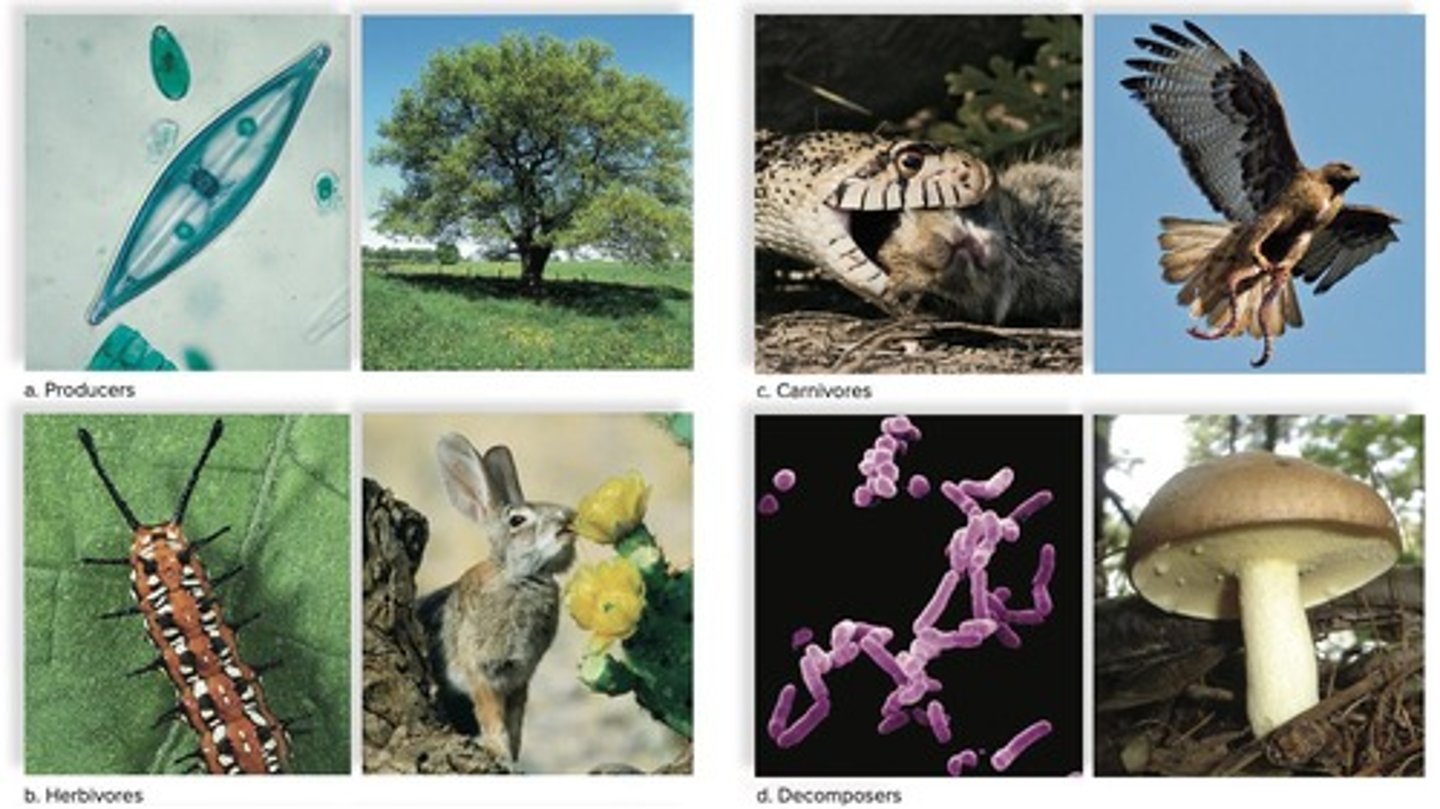
Carnivore
Organisms that primarily consume other animals.
Omnivore
Organisms that consume both plants and animals.
Insectivore
Organisms that primarily consume insects.
Decomposers
Organisms that break down dead organic material.
Detritus feeders
Organisms that consume detritus, or decomposing organic matter.
Predation
An interaction in which one species, the predator, kills and eats the other, the prey.
Cryptic Coloration
Camouflage that makes prey difficult to spot.
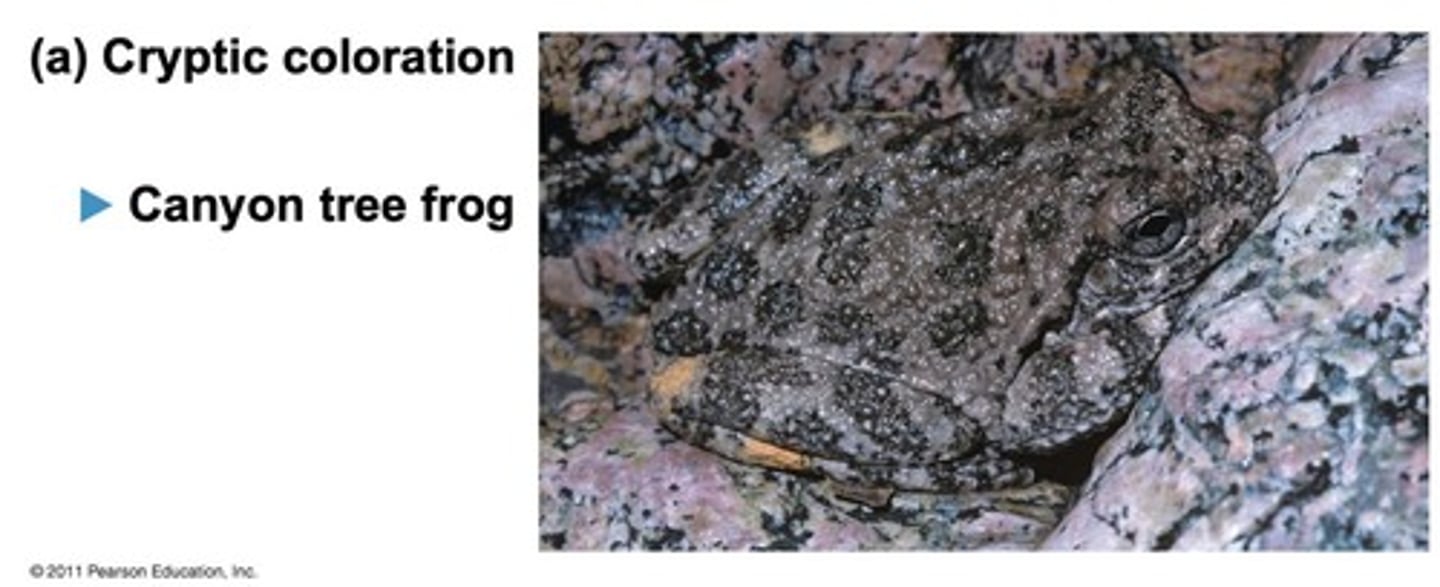
Aposematic Coloration
Bright warning coloration exhibited by animals with effective chemical defenses.
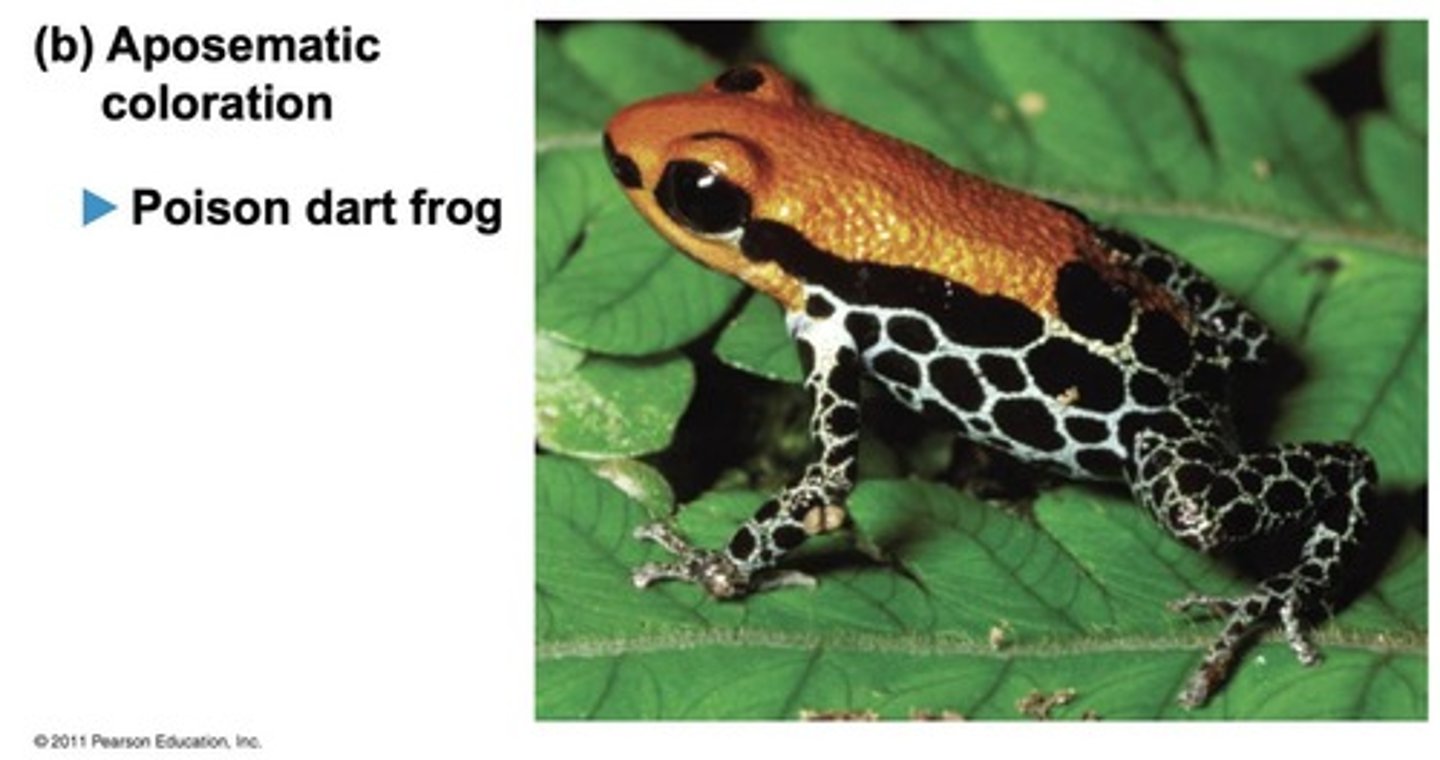
Batesian Mimicry
A palatable or harmless species mimics an unpalatable or harmful model.
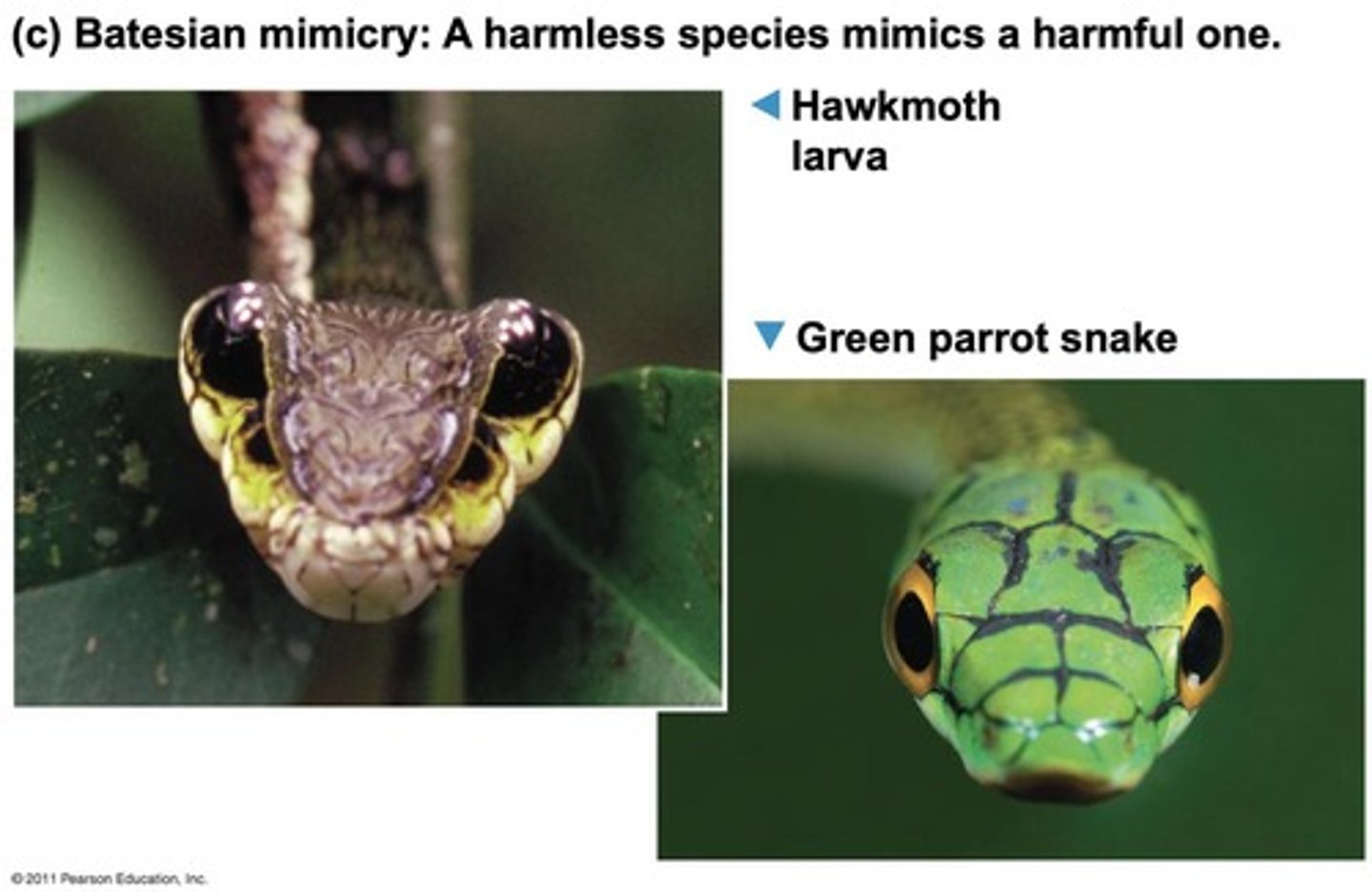
Müllerian Mimicry
Two or more unpalatable species resemble each other.
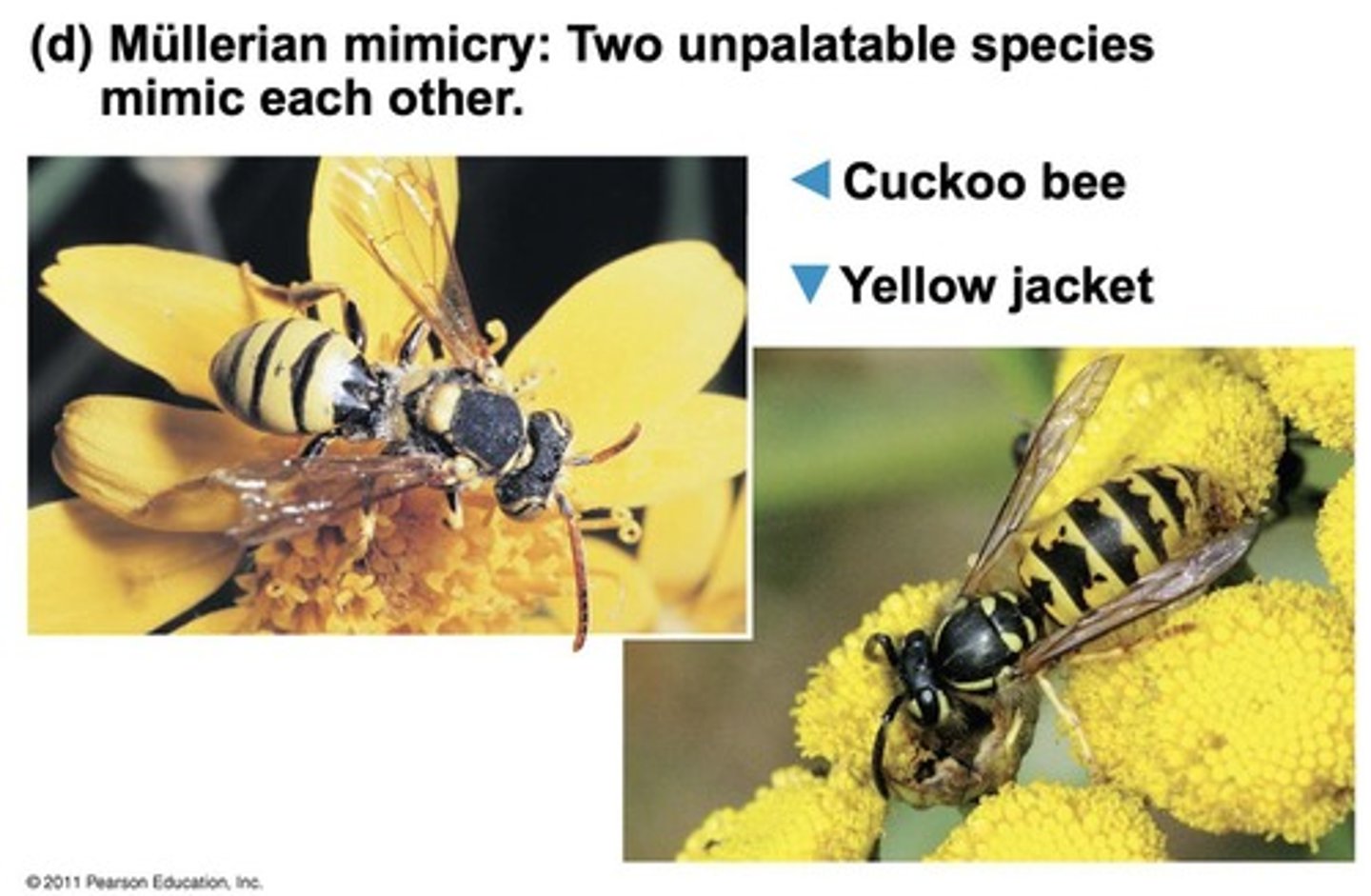
Herbivory
An interaction in which an herbivore eats parts of a plant or alga.
Symbiosis
A relationship where two or more species live in direct and intimate contact with one another.
Parasitism
An interaction where one organism, the parasite, derives nourishment from another organism, its host, which is harmed in the process.
Endoparasites
Parasites that live within the body of their host.
Ectoparasites
Parasites that live on the external surface of a host.
Mutualism
An interspecific interaction that benefits both species.
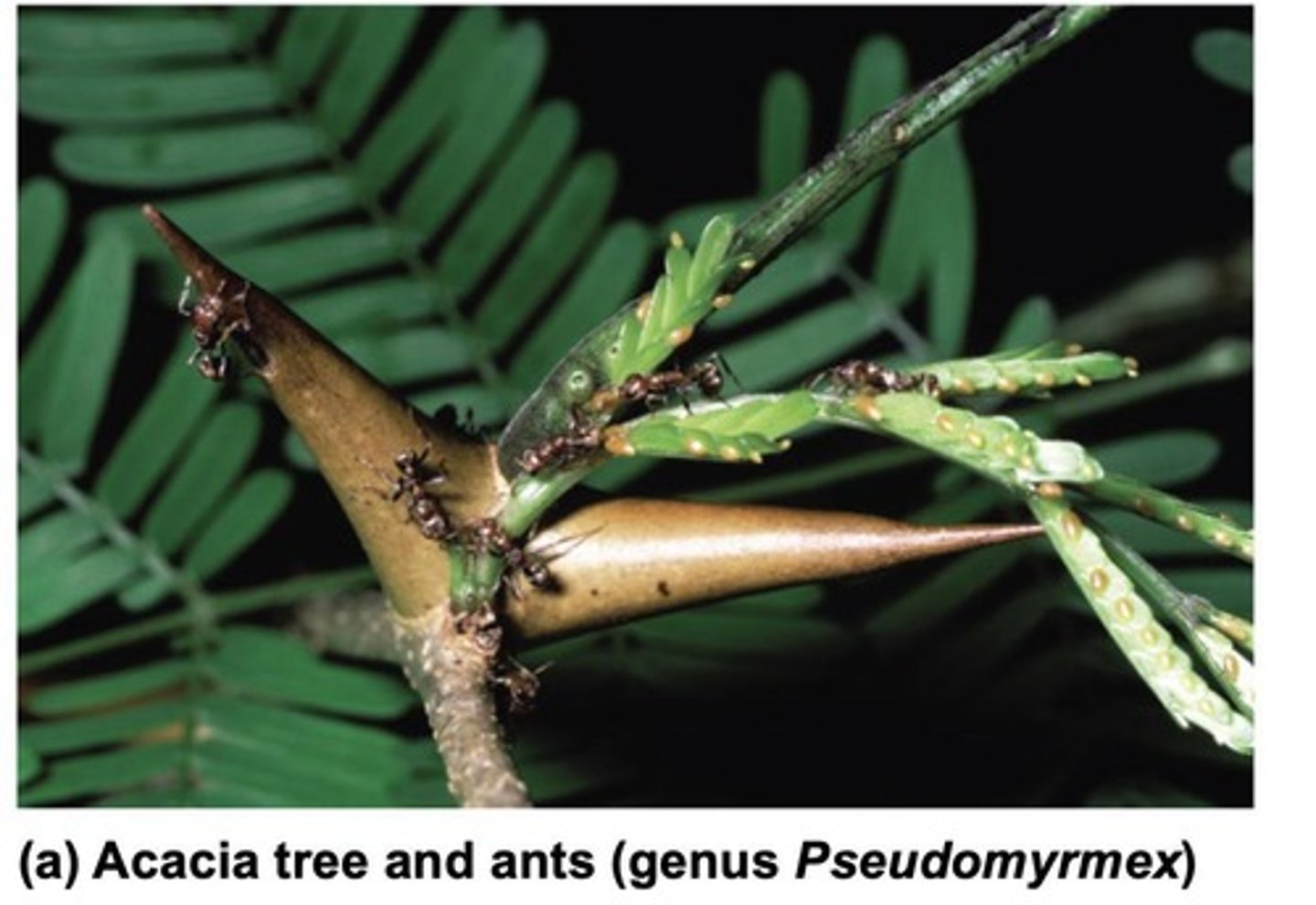
Commensalism
An interaction where one species benefits and the other is neither harmed nor helped.
Facilitation
An interaction in which one species has positive effects on another species without direct and intimate contact.
Biogeochemical Cycles
Pathways by which chemicals circulate through ecosystems involving both living (biotic) and nonliving (abiotic) components.
Reservoir
A source of chemicals normally unavailable to producers.
Exchange Pool
A source from which organisms generally have the ability to take chemicals.
Water Cycle
The water (hydrologic) cycle is characterized by evaporation, precipitation, and runoff from the surface to lakes, rivers, and oceans.
Primary Reservoir of Water Cycle
The primary reservoir of the water cycle is the ocean, although freshwater reserves may be located in aquifers.
Carbon Cycle Reservoirs
The reservoirs of the carbon cycle are organic matter (forests and dead organisms for fossil fuels), limestone (calcium carbonate shells), and the ocean.
Carbon Cycle Exchange Pool
The exchange pool of the carbon cycle is the atmosphere.
Photosynthesis in Carbon Cycle
Photosynthesis removes carbon dioxide from the atmosphere.
Respiration and Combustion in Carbon Cycle
Respiration and combustion add carbon dioxide to the atmosphere.
Imbalances in Carbon Cycle
Imbalances in the cycling of greenhouse gases, such as carbon dioxide, can lead to global warming and climate change.
Nitrogen Cycle Reservoir
The reservoir of the nitrogen cycle is the atmosphere.
Nitrification
Nitrogen gas must be converted to a form usable by plants (nitrates), and this conversion is called nitrification.
Nitrogen-Fixing Bacteria
Nitrogen-fixing bacteria perform nitrogen fixation in root nodules, converting nitrogen gas to ammonium.
Nitrifying Bacteria
Nitrifying bacteria convert ammonium to nitrate.
Denitrification
Some bacteria convert nitrate back to nitrogen gas through denitrification.
Imbalances in Nitrogen Cycle
Imbalances in the nitrogen cycle can cause acid deposition and acid rain.
Phosphorus Cycle Reservoir
The reservoir of the phosphorus cycle is ocean sediments.
Phosphate Availability
Phosphate in ocean sediments becomes available through geologic upheaval, which exposes sedimentary rocks to weathering.
Weathering in Phosphorus Cycle
Weathering slowly makes phosphate available to the biotic community.
Limiting Nutrient
Phosphate is a limiting nutrient in ecosystems.
Imbalances in Phosphorus Cycle
Imbalances in the phosphorus cycle may lead to cultural eutrophication.